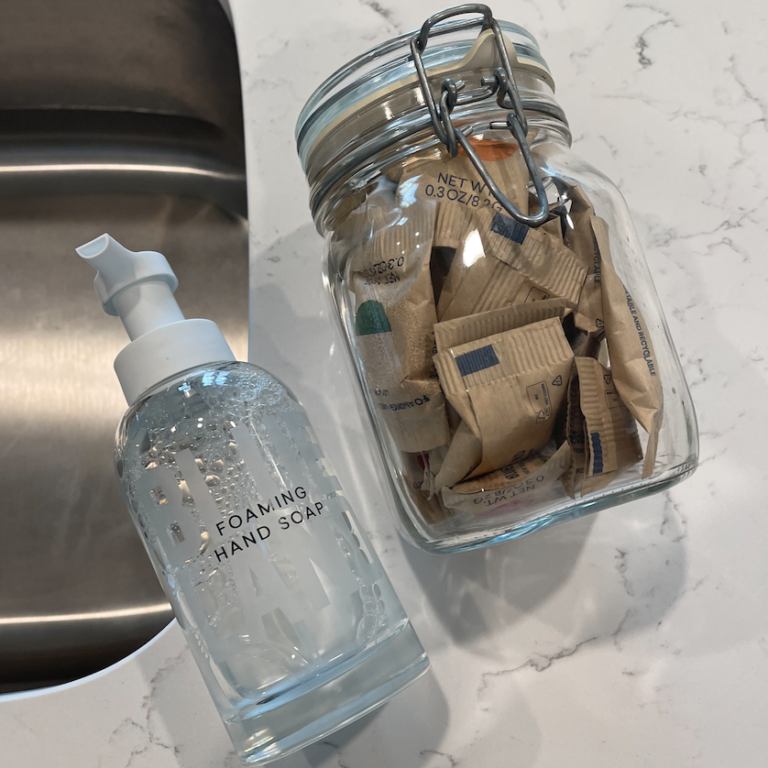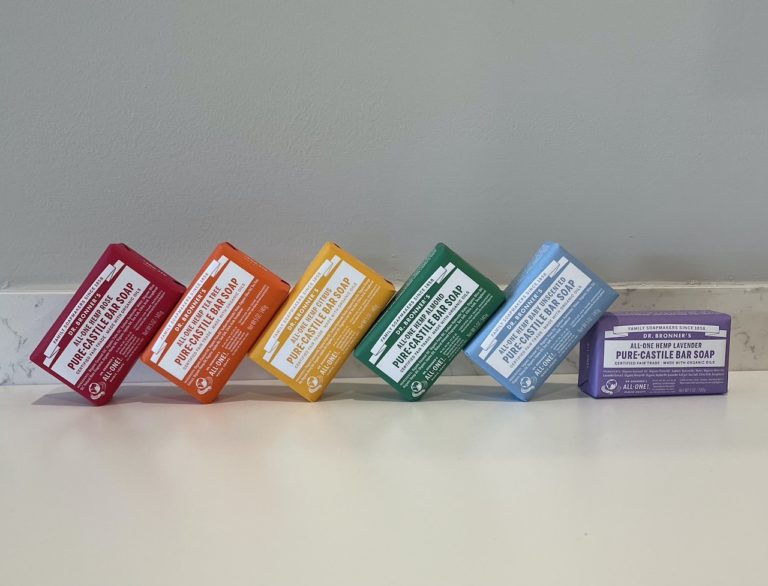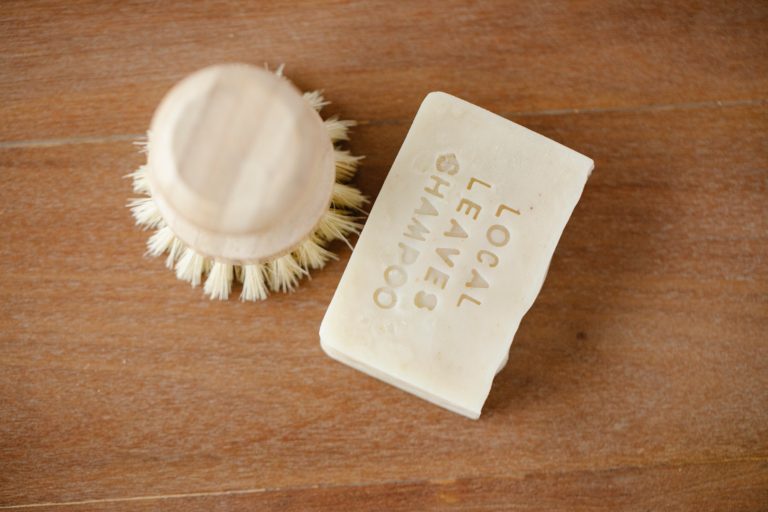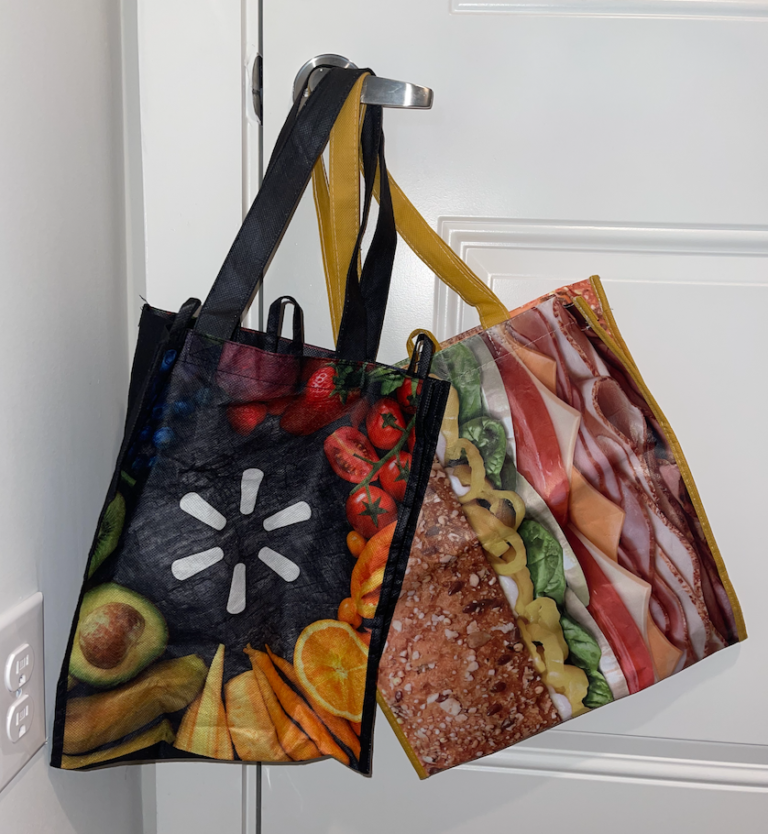Figuring out how to be more sustainable can be a little overwhelming. There are so many brands to look at, so many ingredients to avoid, things to do and things not to do, it feels like it never ends. So I’ve compiled 25 super-duper easy things you can do today to live more sustainably.
Sustainably is supported by readers like you. When you buy through links on this site, we may earn an affiliate commission at no additional cost to you. You can read more about affiliate links on our “Affiliate Marketing…” page.
What makes this list super-duper easy?
At the start of this blog, I sent out a very small survey and one of the things I asked was, what turns you off when you think about living more sustainably? You all put accessibility, researching, experimenting, cost, and convenience.
I agree, every single one of those things can be a huge turn off and definitely prevent someone from taking a small step forward and starting their journey. This is one of the few moments you might see me recommend you do something that sounds a little…odd.
Some of these things won’t even take 60 seconds to do. Others will actually save you money! And then I’ve got a few suggestions that will cost less than $5 and can be purchased at Walmart.
I think pretty much all of these ideas are pretty quick in terms of time, so I’m separating them based on whether they’re free or might cost a teeny tiny bit to do.
Disclaimer
I might say, “buy a concentrate.” It could be Lysol or it could be Blueland. What’s important here, is not that you’re being the most sustainable human being possible, but that you’re being the most sustainable you possible.
If that means switching to a concentrate from a non-eco-friendly brand then that’s okay…for right now. This is all about starting a process, starting a more sustainable journey.
If Clorox concentrate (#3) is what you’re comfortable with, you’re still cutting down on plastic, fuel consumption, and packaging overall. That’s all great to me!
Let’s get started!
First and Foremost

1. Reduce, Reuse, & Recycle
We learn this when we’re kids, but as adults it takes on a whole new meaning because we’re the ones doing the shopping and buying.
Your first sustainable goal should be to reduce! That might look like buying less or not buying at all. There are a lot of items in this list that focus on reducing consumption.
Then, reuse. If you have to buy something, then try to reuse it before discarding it. Get creative here. Old pasta jars don’t have to be just for food. I use mine all over the house, especially if I have something I want to keep dry.
And finally, recycle. This is last and least. Ideally, we want to recycle as much and as little possible. That’s backwards right? No. Recycling is flawed and isn’t an answer to our waste problems. It’s great to recycle, but ideally we want to reduce and reuse first.
If you have to recycle, just make sure you’re not wish-cycling (putting anything in the bin without making sure your region actually accepts it). A lot of our recycling actually gets taken to landfill because it’s just not as efficient as we’ve been told (thanks big corporations).
There’s tons to unpack with recycling and that’s for another post so let’s move onto the fun stuff.
Sustainable for Free
2. Keep a Grocery List
I have 3 things wrapped up in this one tip. First, go into the store with a mindset! When you impulse buy, you increase packaging and food waste. Make a plan, and stick to it!
Meal Plan – Meal planning means you’ll have a grocery list. Have that plan and stick to it. Don’t eat out unless you specifically planned for it. You’ve got the food at home and eating out will just increase the likelihood that you’re going to forget or let food go bad.
Know what’s in your fridge – If you’re meal planning and keeping a grocery list, then you know what’s in your fridge and you’re using it. That keeps food from going bad and ending up as waste.

3. Use Cleaning Concentrates
Using concentrates will save on the carbon emissions, usually money, and packaging. Concentrates are smaller, weigh less, and need to be wrapped up less. You could use Grove concentrates, Blueland concentrates, or even Clorox/Lysol concentrates.
I have a bottle of Clorox concentrate. I keep it for when I really need to sanitize and not just clean. It is the same size as a normal Clorox spray bottle but makes 25 gallons instead of one spray bottle’s worth of cleaner! That’s a lot of bottles we’re saving even if it it’s not “sustainable” because it still comes in plastic.
4. Use Cool/Cold Water
This goes for your washing machine and shower. If you switch the wash cycle to cool, cold, or tap then you’re saving energy because your water heater has to work way less. That saves on your energy bill and can also help your clothes stay nicer longer…which means you have to buy less clothes too.
5. Take Shorter Showers
Obviously, this can lower your water bill. But water also isn’t really a renewable resource. We were taught that water was a renewable resource back in elementary school, but as you’ll learn if you haven’t already, water can and does run out all around the world.
Water usage also has a carbon footprint, believe it or not. Using less of it can really help to save you money and put less stress on the planet.
6. Rainwater for Plants
If you’re a plant parent and have access to a surface that gets wet in rain, I have good news for you. Put your plants out in the rain! Using sky water helps us cut down on tap water. It also helps keep your plants pest free by cleaning the leaves naturally.
It’s a win win win, like everything else on this list to be honest. Bonus, collecting rainwater (if it’s legal for you to do so) can save even more water and money on your part.

7. Thrift
I’m going to be honest, I don’t thrift nearly as much as other green bloggers seem to. But, it’s one of those areas I’m working on! Thrifting can require more time on your part so here’s how I approach it.
I like to go every once and awhile. I usually will have a list of things I need and I like to just keep an eye out for different items I know might show up.
Some items will definitely be there and others might take more searching. I recently needed a new Anchor glass bowl for the oven and I was able to find two bowls for a third of their retail price. You can also find books in great condition, and get some great clothes too.
8. Eat Less Meat/Red Meat
This is a big one, for everyone it seems actually. Meat, specifically red meat, is a major methane source for the planet. That’s the opposite of sustainable.
Methane is just one gas that’s making the earth hotter and hotter. Cutting back on red meat, even a little bit, can really help cut down on your carbon footprint.
Poultry has a significantly smaller carbon footprint. And I find that ground turkey tastes exactly the same as beef when seasoning is involved. I also recommend using soy instead of milk in some recipes. It actually makes some of my foods sweeter, which I’m all for.
9. Adjust the AC
Running your fans uses less energy than running the AC. If your AC is set at 62, try it at 64 but with the fan running. I use increments of 2, but do what works for you and find that sweet spot. You’ll cut down on electricity and save money.

10. Walk/Bike
This one doesn’t apply to everyone. If you don’t have stores near you or safe sidewalks then this may not make sense. But I find that even if something feels too far for a walk or a bike ride, it’s actually not.
I used to ride my bike to the local Starbucks and Moes all the time. I loved it! It feels amazing, the scenery is much better on a bike (usually), and you’re getting exercise! Oh, and you’re saving on gas and carbon emissions too. Even if you only do it a few times here and there, that’s better than nothing!
11. Air Dry Dishes & Laundry
Again, anything heated tends to be an energy sucker. Boooo. I like to turn off the “heated dry” setting and let my dishes air dry. They will be wet when the cycle first finishes, so I usually open it up, roll the racks out, and leave it open all night. Then they’re nice and dry when I’m ready to put them up the next day!
12. Check Out Your Local Farmers Market
I actually think this is soooooo fun. Not everyone has one nearby, but Google or Facebook will definitely have the info if you do.
Farmer’s markets are great for many reasons. First, the produce uses much less packaging than grocery store produce. It also didn’t have to travel as far as your grocery store produce did, so it’s healthier for you and the planet (less fuel consumption = less carbon emissions).
You’re also just going to find cool local businesses you didn’t even know existed. One of my favorite things to get is local honey. I swear it cures my allergies and it’s good for you.
All this, while supporting your local economy instead of global corporations? We’re just rolling in the wins at this point.
Sustainable for Cheap
13. Microfiber Cloths
Use these instead of paper towels when you’re cleaning your mirrors, windows, car windows, everything. Get that paper out of here! Over time, this will actually save you money too, because you’ll have reduced your need for paper towels.
I also use them to wipe down my plants when it’s time to clean my plant leaves with neem oil or something.
Next time you go to Walmart (or probably any other larger store), swing by the automotive section and grab a pack of microfiber cloths. You can find them for a really low price!
14. Reusable Cleaning Cloths
Just like with the microfiber, go by the automotive section. These seem to be a little harder to find so you might need to check back later, but you’ll want to look for very simple white cloths. You could also use wash rags.
I use these when wiping down my stove, kitchen countertops, bathroom countertops, cleaning up small-ish spills, and so on. I recommend white because you’ll know when it’s time to wash them. I wash mine all together, usually along with my old towels that I also use for spills and such.

15. Body Wash Bar Soap
For the past few years, I’ve been using Dove body wash. I know, I know. This is one of those moments where brand matters (for some people). Moving from liquid soap to bar soap is an adjustment. It’s okay if you want to experiment with a cheaper option like Dove. Dove is cheaper than a lot of sustainable choices.
My brand/product reviews mention stakeholders, in this case Unilever owns Dove. Both companies produce many many plastic products and people really avoid them because of it. This is a moment where, if Dove is what works for you, then that’s okay for now. I’m actively looking for an alternative (stay tuned for posts about what I’m trying).
Regardless of brand, as a consumer you are using less plastic because bar soap does not come in a big plastic bottle. That’s a win.

16. Bar Shampoo
It’s the same thing here as with body wash. Experiment. My first shampoo bar was Spring and Vine from Target solely because it’s the first bar shampoo I ever saw in a big store. Accessibility matters. And, I’m just not a big online shopper.
If that’s you, then take wins where you can get them. X brand might not be the most sustainable, but if it’s better than where you’re coming from then it’s a step in the right direction. Be proud of that!

17. Reusable Straw
A true sustainable classic. A really important thing to note here, if you don’t use straws already, then you probably don’t need more than 1 or 2 of these (if any at all). I use straws to avoid staining my teeth and have since early high school. Back then, I sadly used plastic straws. Switching to metal made sense for me!
If you don’t use them all the time, then having one when you’re at a restaurant is all you need. Don’t buy those big 14 packs because even if it’s a “sustainable” item, you can still overconsume. And over consuming is not sustainable, you’re not reducing anything.
18. Reusable "Mop" Heads
This is a great option for things like a Swiffer. I would shop around and look at reviews for these. This will cut down on waste and will save you on money too. The head can likely be thrown in the wash with those reusable cloths I mentioned earlier too.
19. Reusable Cup
Also a classic! I recommend finding at least one very versatile cup. A popular zero waste brand is Klean Kanteen. I am a Yeti man all the way. I’ve just been buying them since 2015 and my brand loyalty is strong.
The point is, you want to have something that you can put coffee in when you’re at Starbucks, iced tea when you’re at home, and water when you’re at the gym.
Having a versatile cup is better than having a hot mug for hot coffee, a tumbler for iced coffee, a water bottle for water, and so on. Sure they might all be reusable and serve a purpose, but starting with something you can use for any and everything is an especially a great start.
20. Dryer Balls (w/Essential Oils)
I’ve been using dryer balls for years. You can find them just about anywhere. I got mine at Walmart, Grove has them; you won’t have a hard time finding some.
These replace dryer sheets. They reduce static, help prevent wrinkles, and can even reduce drying time (which saves money).
If you really need fragrance, you could dabble essential oils onto the balls before use. I’m testing that out right now actually (spoiler, it’s not working for me but others swear by it so it might be worth a try. ).

21. Reusable Water Bottle
Single use water bottles are so 2000’s, there’s really no reason to still have them today. Try me. If you need a dedicated water bottle, go for it. But get something reusable.
Find a water bottle that fits your lifestyle, and get it. Reuse the heck out of it. Like I said, many people stand by Klean Kanteen, but I haven’t tried them just yet.
I actually love Hydrojug (even though it’s a plastic jug). The volume of the bottle fits my lifestyle the best and since trying it I’ve never been able to switch to anything smaller. I’ve even tried and failed. Do what works for you and reduce that plastic consumption.
22. Cloth Napkins
If I end up with napkins from takeout, I usually use those until they run out. If I don’t have those, then I have about 8 washcloths I bought at Walmart to use instead. I keep them together when they’re dirty, and batch wash them (with other items) when it’s time to reuse.
23. Reusable Masks
Reusable masks reduce the need for single use masks, plain and simple. At this point, you likely have these. But if you don’t, it’s not too late. Perhaps, it’s even a better time to buy them because you can usually find discounted now.

24. Reusable Grocery and Produce Bags
Reusable grocery bags are great, but like the straws, you actually have to use them for it to be sustainable. If you struggle with remembering to bring them to the store, I have a whole post on tips for remembering them! You can check it out here!

25. Versatile Food Storage
By versatile I mean, get food containers that serve more than one purpose! I use substantially less dishes if I can just move the container from the freezer to the fridge, and right into the oven or microwave the next day.
That saves me kitchen space, dishwasher space, cleaning time and water because you wash less dishes. I personally love love love Snapware and Stasher. I use Stasher for solid foods and snacks a lot. I use Snapware for liquids, lasagna, pie, and really anything that won’t really do well in a flexible bag.
If you want to know more about Stasher, I have a full review and a list of ways I use them everyday.
There you have it! 25 super-duper easy things you can do today to live more sustainably, for free or for very cheap!
Thanks for joining me today! If you liked this content and want to see more, please subscribe to my newsletter. You can do that here!
In case you didn’t catch my post about TerraCycle, read all about it here.
Sustainably is supported by readers like you. When you buy through links on this site, we may earn an affiliate commission at no additional cost to you. You can read more about affiliate links on our “Affiliate Marketing…” page.
Pingback: Is Spring & Vine Bar Shampoo Right for You? - Sustainably